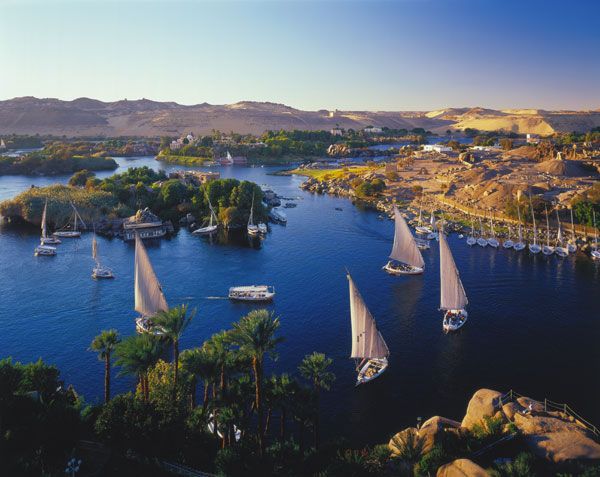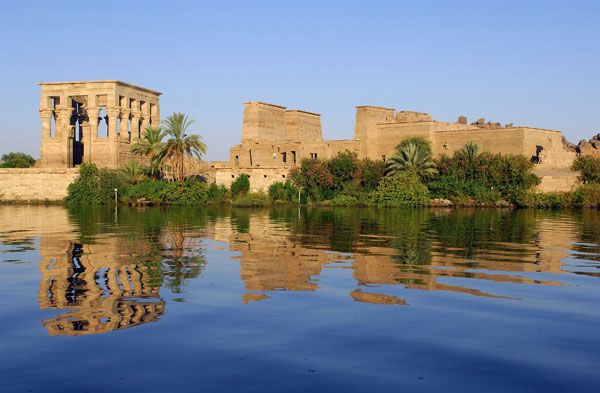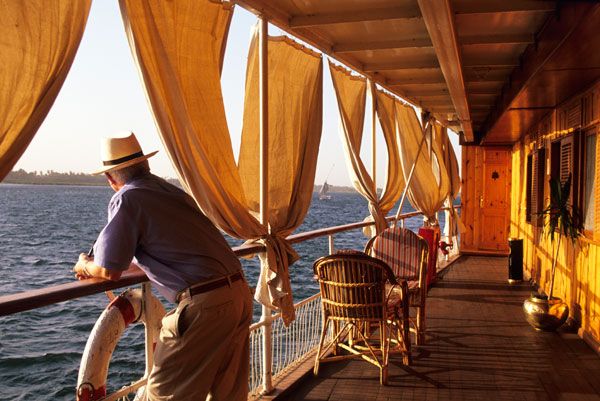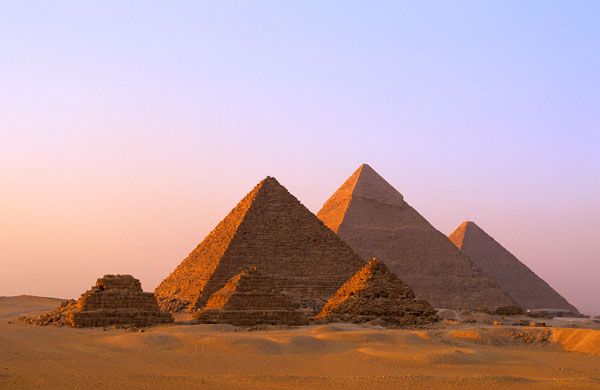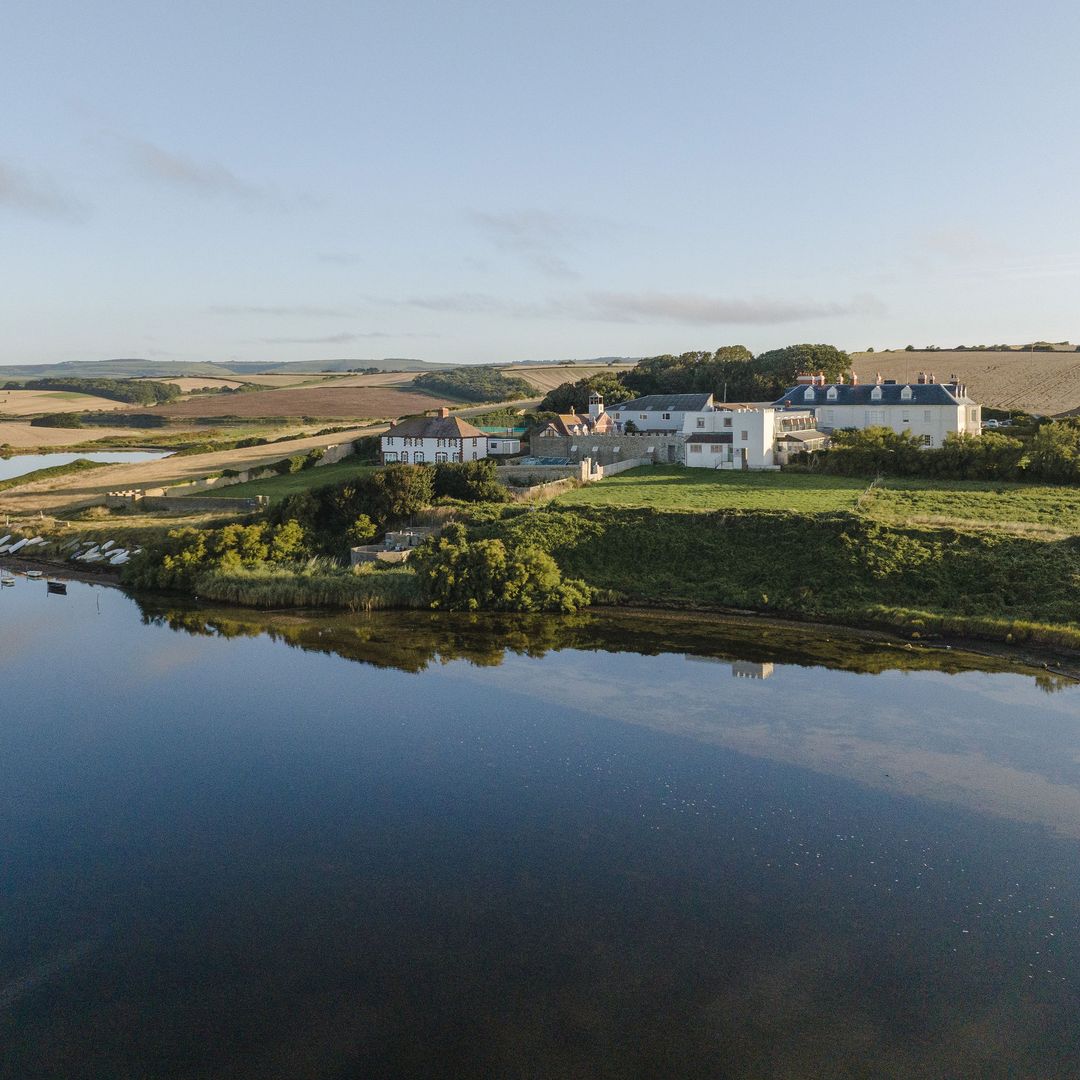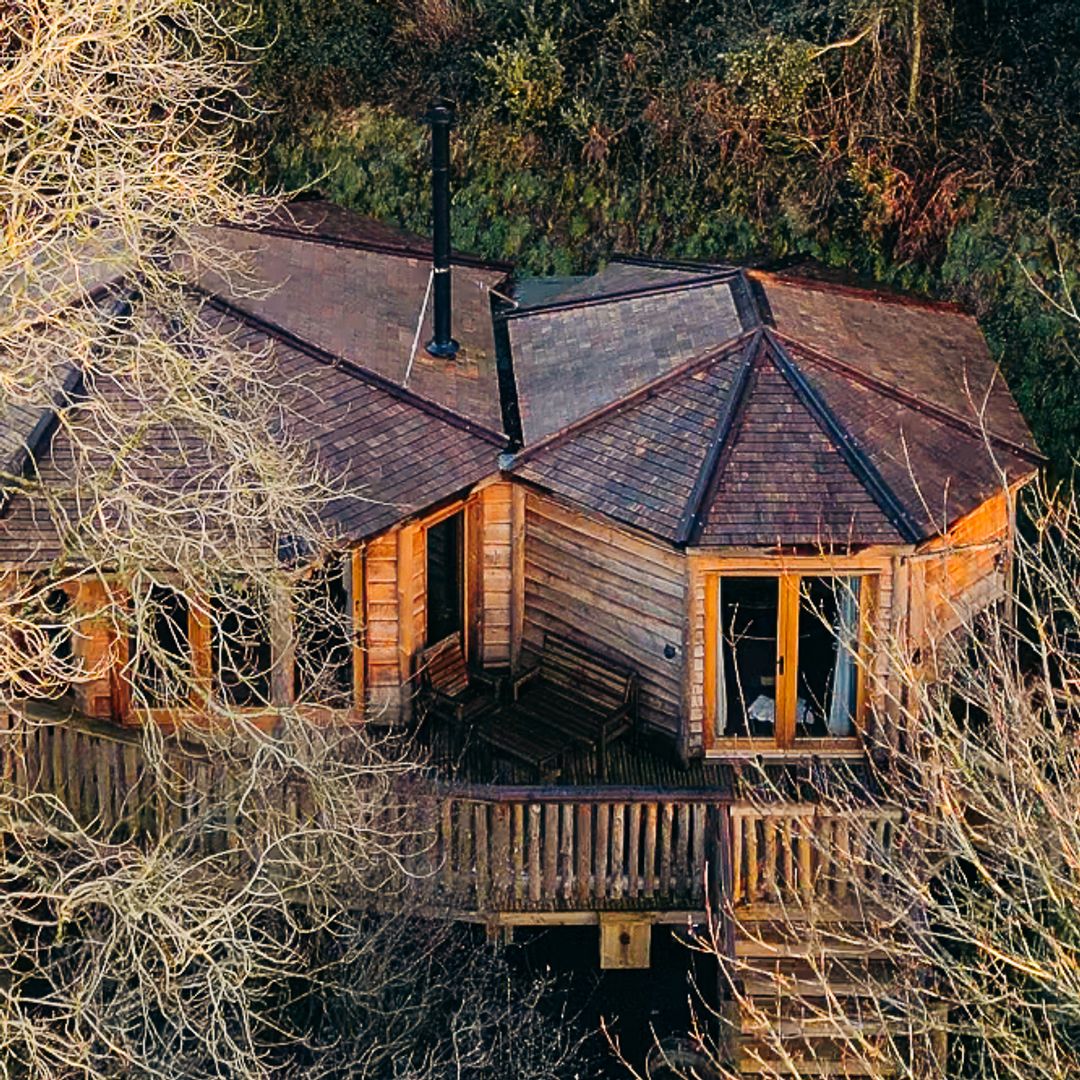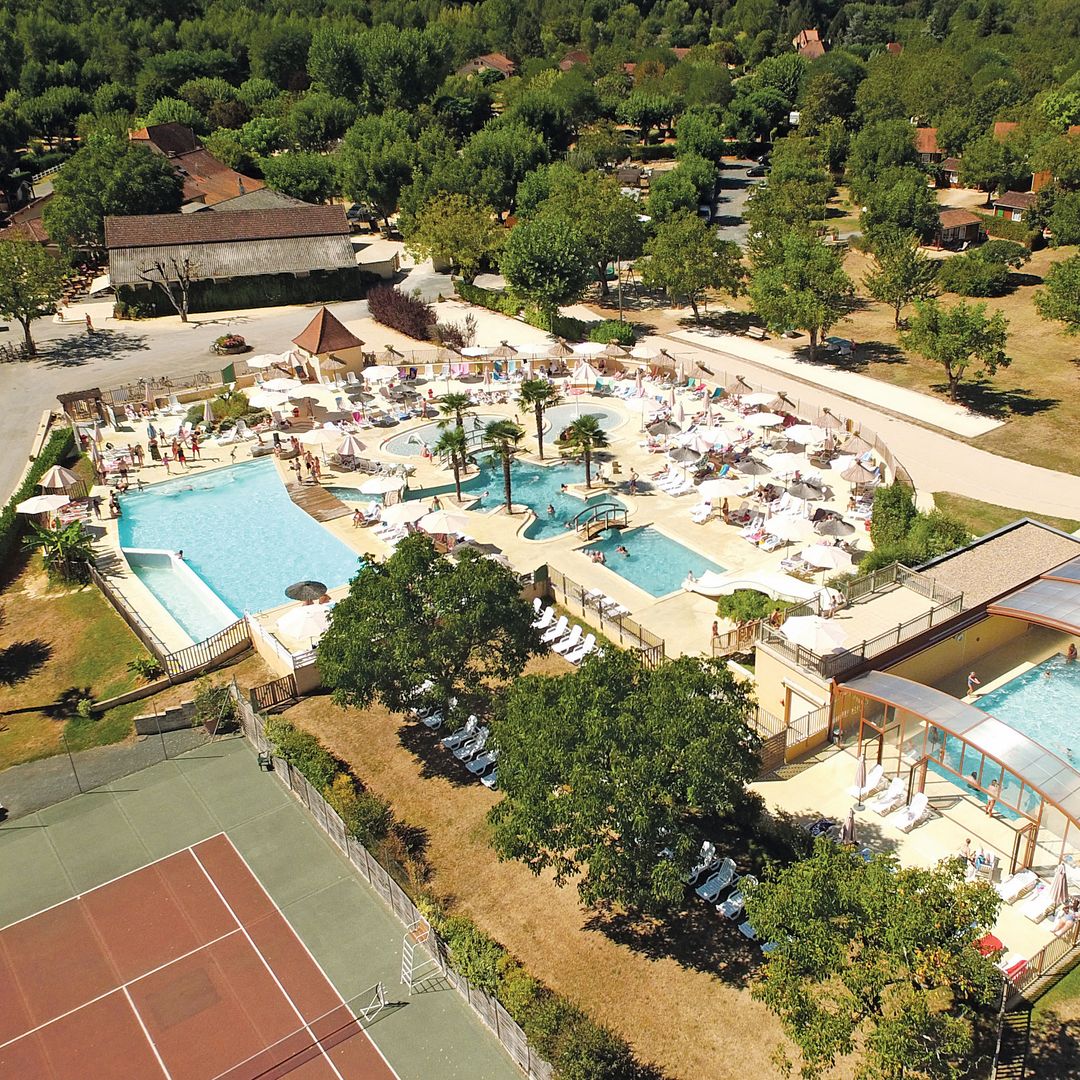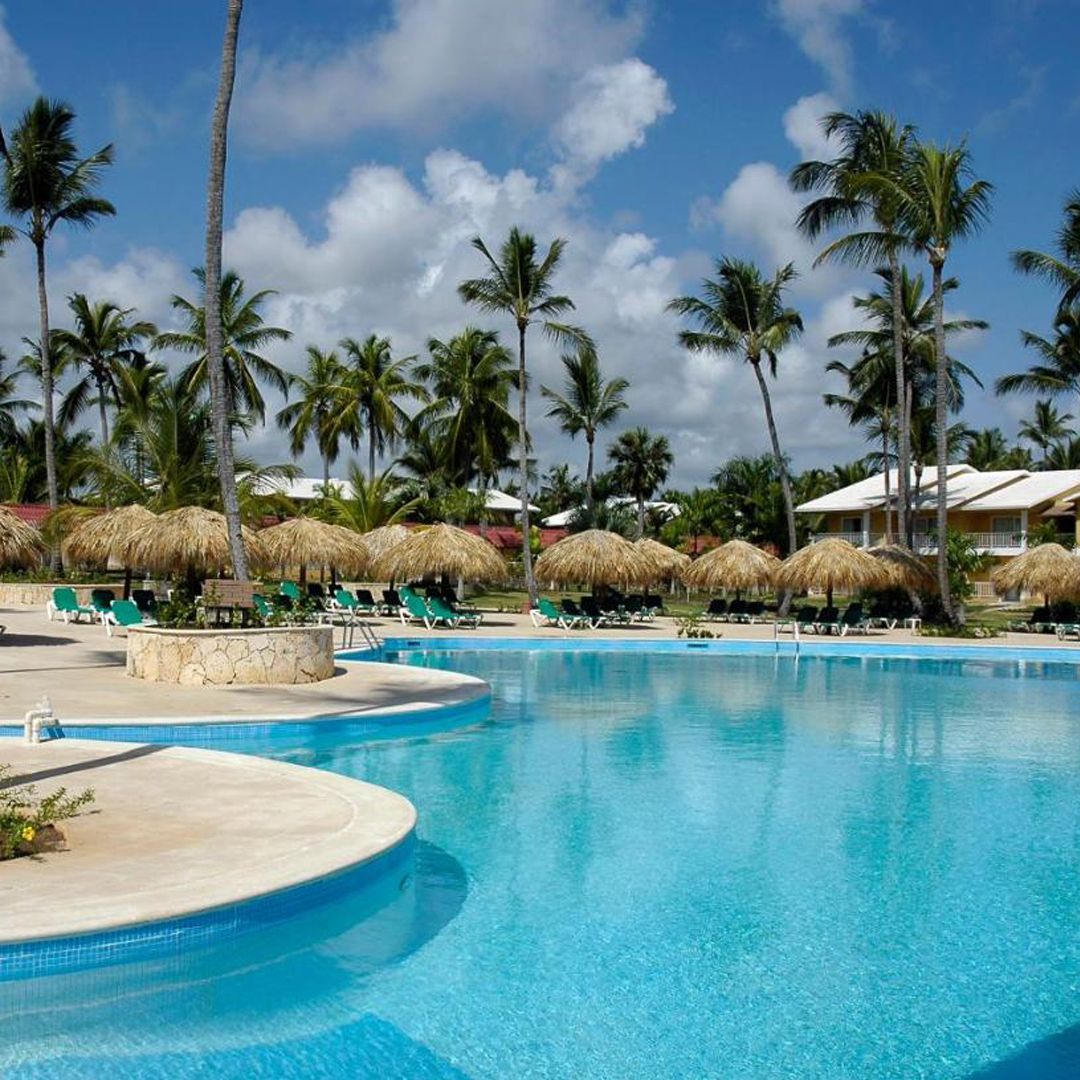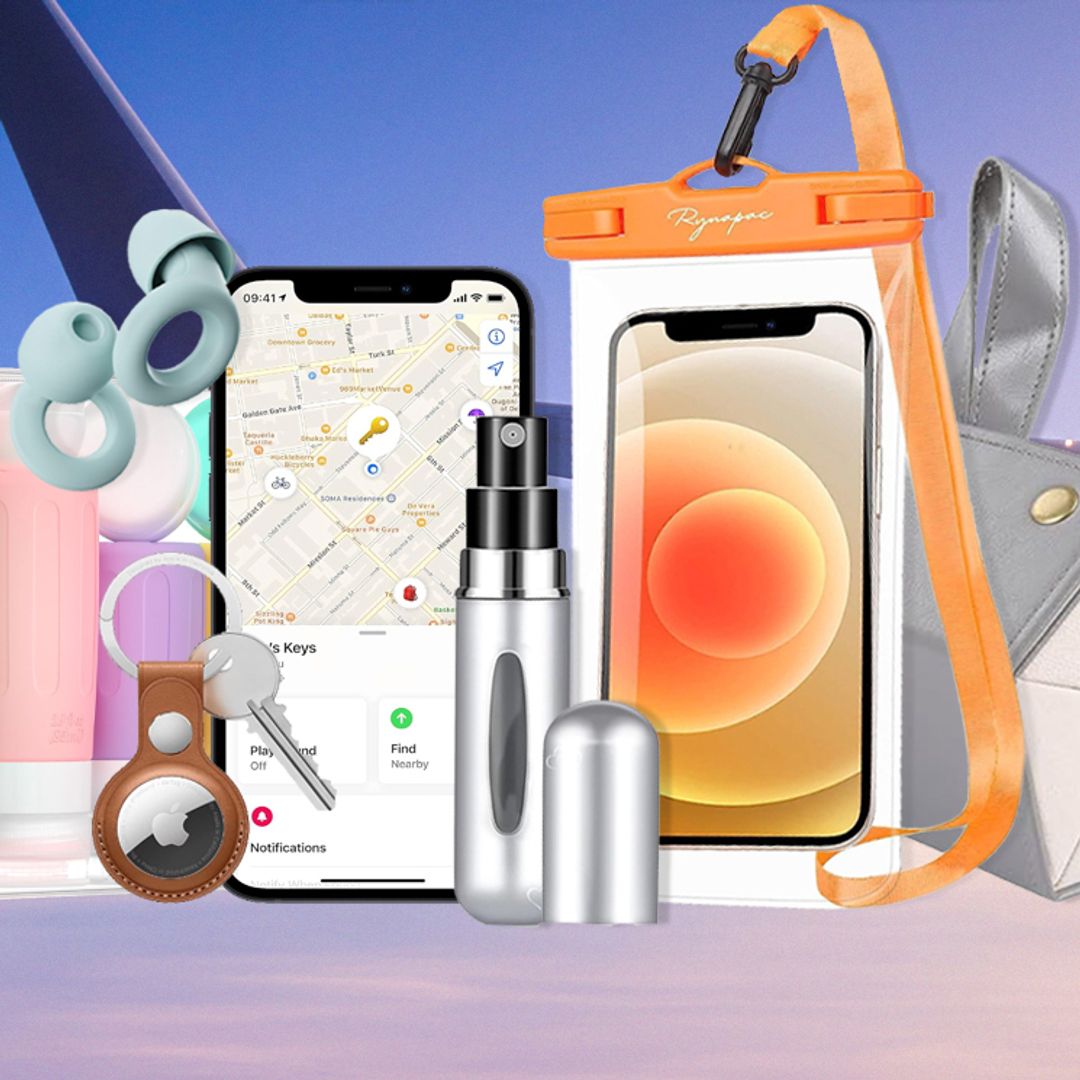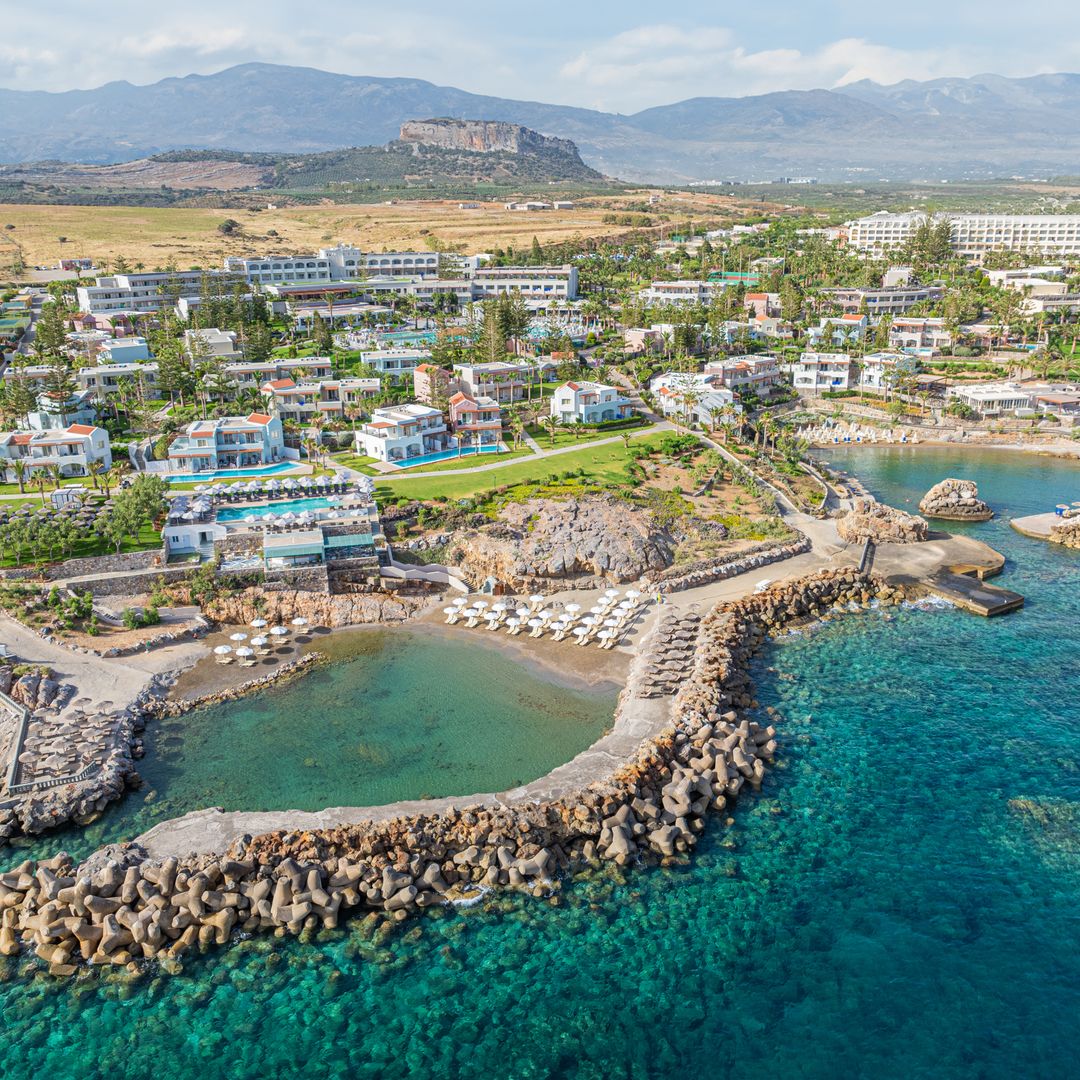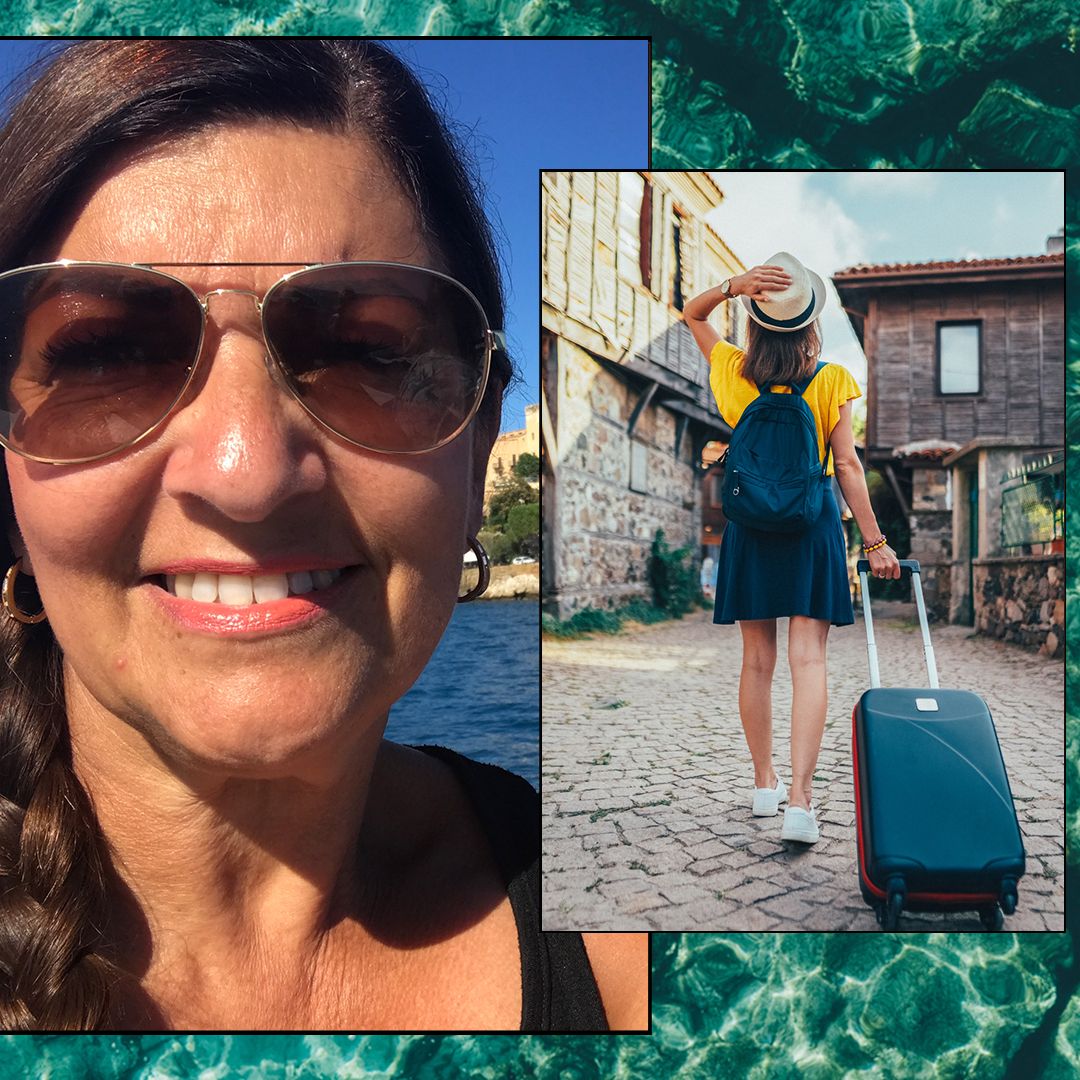The pyramids of Giza, the temple complex of Karnak, the two massive rock temples of Abu Simbel... there are few scenarios as awe-inspiring as those seen from aboard a boat on the Nile. Whether it's a modern vessel or a traditional wooden felucca, nothing compares to sailing the great river as it meanders between Luxor and Aswan, forging a fertile strip of arable land through the heart of the desert. Especially as dusk falls, the beauty of the pharaonic temples along the banks seems to echo in eternity.
To begin with, nowhere offers a better vantage point than the legendary hotel, the Old Cataract, Aswan, built in 1899 opposite the island of Elephantine, where the atmospheric views inspired Agatha Christie as she wrote part of Death on the Nile. Even if you cannot stay at the hotel, non-guests can enjoy a drink – and the magnificent views – from the terrace.
Following the legend of the great pharaohs, the tour of this river valley with its green, orange and ochre hues reveals the most important centres of Upper Egypt, a paradise for lovers of archaeology. Witness a son et lumiere performance at Karnak, one of the largest sacred complexes in the world and home to the temple of the god Amun, or just stroll around the Avenue of the Sphinxes. At Luxor, visit the elegant pharaonic buildings, built under Amenhotep III and extended by another great builder, Ramses II.
Farther on, in one of the Nile's most attractive landscapes, Kom Ombo is an unusual temple dedicated to two deities: Horus the Great and Sobek, the crocodile-headed god, while the buildings of the temple of Edfu, the best preserved of the Ptolemaic era, are perfect examples of the sacred architecture of ancient Egypt.
Sailing on towards Aswan, where the Nile valley ends, the cultivated fields of the river's meandering loops give way to wide sandy shores that used to mark the very boundaries of civilization. Here, new wonders await: the island of Elephantine with its two 'nilometers' that measured the level of the great river and told of famine or flood, the huge unfinished obelisk, and the Nubian Museum. On an island in the vast artificial Lake Nasser formed by the Aswan High Dam is the ancient temple complex of Philae, moved from its original location when the dam was constructed. Abu Simbel, too, was relocated in the Sixties and the two massive rock temples constructed by Ramses II are set on the lake's western bank about 230 kilometres south west of Aswan.
These, though are the southern reaches of the great Nile, a river second only to the Amazon, but Cairo, the capital of Egypt, lies almost a thousand kilometres down-river to the north. Here, in Africa's largest metropolis and the centre of the Arab world, East meets West in a melting pot of past, present and future. It's unthinkable to visit without making a pilgrimage to the great pyramids of Giza, the only one of the seven wonders of the ancient world that still exists. A visit to the burial chambers inside the pyramids, the Solar Boat Museum and the son et lumiere show before the Sphinx provide an unforgettable insight into the unique culture of the time of the pharaohs.
At the royal necropolis of Saqqara pioneering artworks speak of the wealth and creative spirit that existed in neighbouring Memphis, the first capital of the Old Kingdom. Highlights include the Step Pyramid of Djoser, a number of tombs known as mastabas, a fantastic relief decoration and the Serapeum, where the mummified sacred bulls of Apis are buried. At a short distance is Dahshur, away from the crowds, where the first pyramid-shaped monumental tomb was erected, while back in the modern city of Cairo, a visit to the Egyptian Museum with its unparalleled collection of priceless objects including the legendary treasure of Tutankhamen is a must .
THE PRACTICALITIES
When to visit In summer, temperatures range between 26ºC and 41ºC, so any sightseeing must be done in the early morning before the sun gets too high. It is better to visit between October and April when temperatures range from 11ºC to 30ºC.
Getting aroundThe vessels that sail the Nile range from large cruise ships to dahabiyas, the smaller luxury cruise vessels that are generally reserved for more exclusive trips, or the simpler feluccas, which have no cabins and are usually rented by younger travellers. Most of the cruises tie in with excursions to the temples, but you need to check whether these are included in the price or will need to be arranged and paid for on arrival. Today, it is usual to travel to Abu Simbel by bus or plane, although it can be reached by boats that sail on Lake Nasser.
Where to stay Two elegant old colonial hotels from the Sofitel chain are Old Cataract in Aswan, and the Old Winter Palace, Luxor. In Cairo, the Four Seasons Hotel at Nile Plaza.
Learn more:Tourism in Egypt

